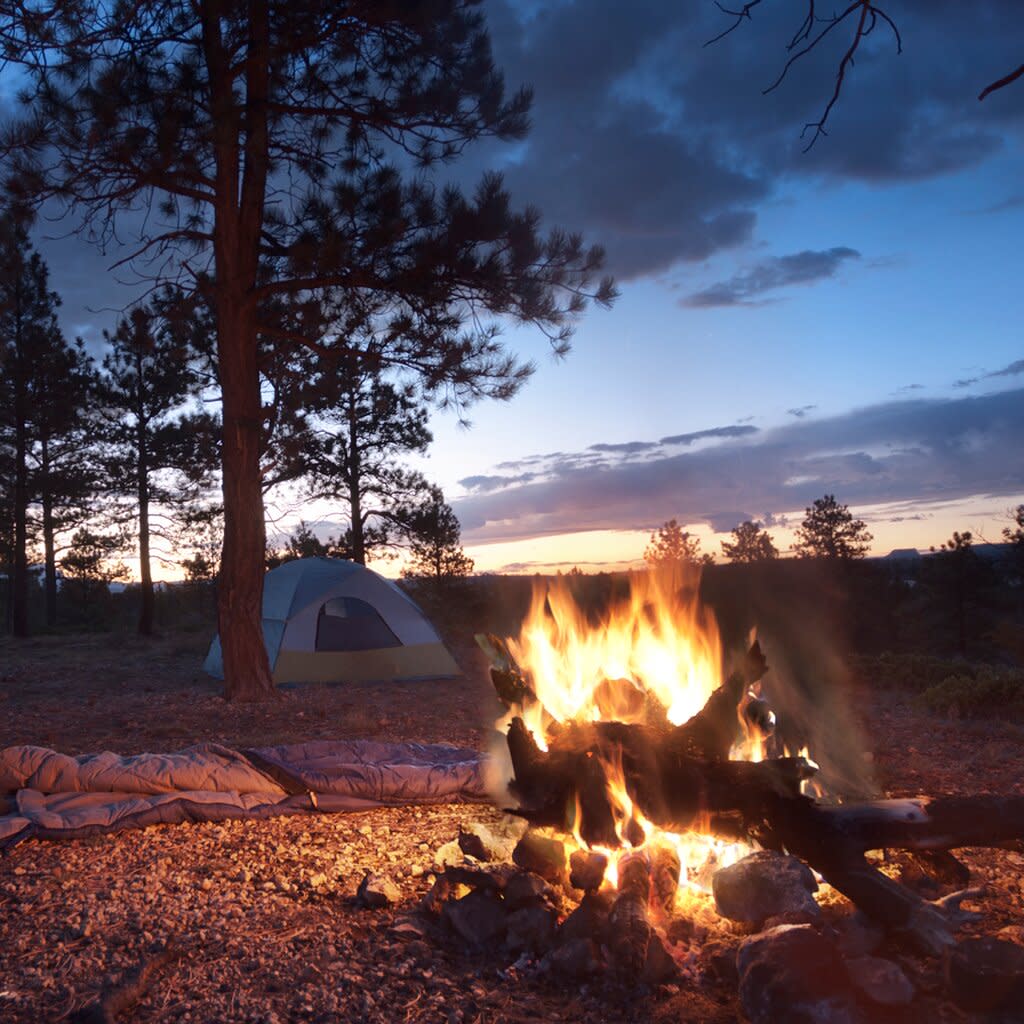Where to Camp in Jackson Hole

iStockphoto
There’s no doubt Jackson Hole has a selection of wonderful hotels to choose from—from the Zen-luxe Amangani to the budget Painted Buffalo. But, how much better will a Frette linen-dressed bed feel after a night (or two) out under Jackson’s star-ful sky? Ninety-seven percent of the land in Jackson Hole is owned by the federal or state government. About fifty-percent of this is a wetland area or under water. Much of the rest is open for camping. There are developed campsites in the front-country of Grand Teton National Park—at Jenny Lake, at several places along Jackson Lake, on the Gros Ventre River—but you don’t need our help finding these. They’re listed on every single website about the park. (Do know that you need to make reservations as far as advance for them.) Here are four hidden drive-to gems in the area’s national forests and one recommendation for a backpacking site deep inside the park.
Curtis Canyon
The closest camping to downtown Jackson is up Curtis Canyon in the Bridger-Teton National Forest. Towards the top of the canyon there is a developed campground with designated sites and vault toilets and there are also numerous free sites. Whether you opt for the campground or snag a free spot, expect views out over the National Elk Refuge and across to the Tetons.
Cascade Canyon
Seven miles up Cascade Canyon in Grand Teton National Park is a mile-some-long camping zone with nearly one dozen undeveloped sites to choose from. The higher you hike, the closer you’ll be camped to Lake Solitude, one of the best spots in the entire park to watch and photograph the sunset. Reflections from the park’s major peaks cover the lake. A backcountry camping permit is required.
Atherton Creek Campground
There are 21 tent sites (and nothing for RVs) with grills and picnic tables and communal vault toilets at this campground on the northern shore of Lower Slide Lake, in the Gros Ventre Mountains. There’s also a boat ramp. Power and self-propelled boats are allowed on the 700-acre lake, which was formed by a massive landslide—still visible—in 1925.
Hoback Campground
The Snake River is the valley’s most famous waterway, but it’s the Hoback River that is designated a Wild & Scenic River. This smallish campground is right on the Hoback and can accommodate both tents and small RVs. There is a vault toilet, potable water, and excellent angling a few minutes’ walk from every site.
Shadow Mountain
Just outside the eastern boundary of Grand Teton National Park, Shadow Mountain—because it is in the national forest instead of the national park—requires no permits. A dirt road most 2-wheel-drive cars can handle climbs the 1,400 feet to the gentle summit, passing campsites along the way, but sites at the bottom afford Ansel Adams-views too. All camping here is free and there are no services or amenities.

